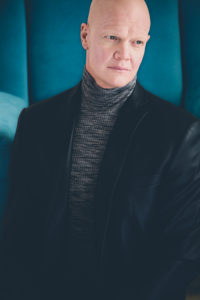
The coolest thing about Derek Mears isn’t that he’s getting to play Swamp Thing in the new original series set to premiere on the DC Universe digital subscription service May 31, but that he is so grateful to be doing so. As a fan of the iconic character himself, the California-born actor first picked up a “Swamp Thing” comic book as kid – before he could even read – only to find himself bringing the misunderstood creature to life on the small screen decades later. Full circle at its finest!
We recently sat down with Mears to discuss what his younger self would think of his latest role, the wearable art that is the Swamp Thing suit, and why he prepared by reading about everything from existentialism to botany.
TrunkSpace: What would 12-year-old Derek think about getting to play Swamp Thing?
Mears: 12-year-old Derek just stares at a wall for his entire career going, “Are you kidding me?” I don’t understand how this happened, but I am in no way sad about it. If I had six guns right now, I’d be shooting them in the air. So, pretty excited.
TrunkSpace: Because it’s such an established character, did you feel pressure to make Swamp Thing your own?
Mears: For sure. Any role that I do, I approach it that way. It’s like handwriting. If you and I were to play Pinocchio, we’re going to approach it different. It’s our own kind of style and it’s naturally going to happen. But yeah, of course, I did put my own little spin on things, but also tying back the fan pressure… I wouldn’t really say it’s fan pressure, it’s… on my end, more of a responsibility. I‘ve been getting so many lovely messages on social media from people who have grown up with Swamp Thing being their guy, and they already have this personal relationship that has given them crossroads in their life, and given them answers, and given them joy. It means so much to these people that I knew I had that responsibility of making it right for them, because it’s almost like you’re babysitting their child and going, “Oh, I want you to be happy in what we’re doing, and be on board,” because you don’t want to ruin those memories. You want to make those memories that they have – and the love for the character that they have – flourish.
TrunkSpace: In many ways Swamp Thing has always represented what The X-Men have for people, which is, characters who are outcasts. For many readers who feel that in their own lives, that helps form a connection.
Mears: Oh, 1,000 percent. That’s a huge theme that we’re doing in this version of “Swamp Thing” where a lot of it is about acceptance that we can all kind of relate to. I’ll call it trying to accept, or struggling to accept, who he is as Swamp Thing. It’s something that we all feel, because at certain points, we feel we’re too tall, or too short, or too thin, or too wide, or our teeth just aren’t right, so there are elements of humanity that we all gravitate to with this character. So in a sense, he represents us.
TrunkSpace: In many ways, he was a more relatable character than the super-powered heroes. He was more human than some of the human characters.
Mears: Oh, absolutely. That’s what’s kind of beautiful about it. He’s such a balance. Where there’s good, there’s bad, but there has to be a balance and he strives to do the right thing. But as humans, we’re all fallible and we’re going to mess up somewhere. It wasn’t just the stereotypical black and white of things. There’s so much gray to this character, but the intention is to do good.
TrunkSpace: Were you nervous leading up to the first trailer being released and fans having their first look at what the series and the character would represent?
Mears: Honestly, through my own vision or through my own rose-colored glasses, when I first saw the concept for the character of how they were executing it, my mouth dropped. I was like, “Are you kidding me? That’s what you’re going with because that is pretty right-on!” And I kind of knew ahead of time because the buzz on the set has been sort of there the entire series. It’s one of those special jobs where the cast and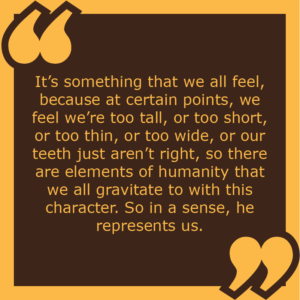 crew get along so well, and there’s no hierarchy between the different departments. It’s like, “Oh, we all want to row the boat in the same direction to accomplish the best possible story that we can.” And once I saw how the suit looked, I went, “Okay.” Some people tear up over it. It’s like, “I can’t believe it.” Also, seeing that teaser shot, I go, “Wait until you see it in the different proper lighting, it looks even better than that.” And I’m not bragging because I’m in the suit, but I’m just trying to relate that as a fan myself, I get to wear art. And that art is pretty darn accurate. I don’t know how you could get much closer to the bullseye with that.
crew get along so well, and there’s no hierarchy between the different departments. It’s like, “Oh, we all want to row the boat in the same direction to accomplish the best possible story that we can.” And once I saw how the suit looked, I went, “Okay.” Some people tear up over it. It’s like, “I can’t believe it.” Also, seeing that teaser shot, I go, “Wait until you see it in the different proper lighting, it looks even better than that.” And I’m not bragging because I’m in the suit, but I’m just trying to relate that as a fan myself, I get to wear art. And that art is pretty darn accurate. I don’t know how you could get much closer to the bullseye with that.
TrunkSpace: What’s so great about that is, with this kind of wearable art, you’re leaving a mark on pop culture and the suit could end up in a museum some day.
Mears: I’m thrilled about that. The work that the Fractured FX guys did, with Justin Raleigh at the helm, they put so much time and effort into this. There are some times where people kind of rush through and go, “Oh, what’s the minimum that I have to do to do my job?” I know for a fact that they went above and beyond, and went outside their own budget and used some of their own budget to make it right, because they knew how much this meant to fans and to themselves as artists. I’ve been so blessed to wear different prosthetic characters throughout my career, but I tell you, man, this suit is the Cadillac of suits. The way that you can emote so well through the face, the way that the prosthetics move and work… but it’s all within the design. It was done on purpose. So even like spending so much time in the water, they designed it to be a quicker drying suit than it normally would be. I’m looking at it in a mirror after wearing it I don’t know how many times… because after a while, you kind of get like, “Okay, that’s what I’m wearing,” but every time I’m suiting up, I’m staring at a mirror going, “Are you kidding me? I can’t see the lines on this, the way that it moves.” If I want to, I can kick over my head. It moves so well. So it’s really a pleasure. I’m not trying to pump it up more than it is, but just from my eyes, I’m really lucky to wear this. I can’t wait to see the fans’ reaction when they see it onscreen.
TrunkSpace: And you touched on it, but the suit’s ability to emote is incredible, which is so important for this character. From a performance standpoint, did this character require a different approach than other characters where you had to wear prosthetic suits?
Mears: Well, yes and no. I’ve been on producer sessions or what not for features or shows, and they’re like, “Oh, we need a big guy to wear a mask,” and I’m like, “Alright, have a good day, guys.” “Are you leaving?” I’m like, “Yeah, if that’s your mentality, I’m not right for this job.” Because there’s so much more that we do for this when you’re behind a suit. You approach it like it’s any other character. You have to add that emotional depth, and that’s why I think it’s so important to do a lot of characters like this practically and not just CGI. There’s the point where the two could marry with, say, they benefit each other, which is amazing, but you have to be able to emote the humanity of the character through that makeup. And especially with this character, there’s such a pathos to Swamp Thing, and the extremes of extreme sadness to extreme violence and anger, and the middle ground of that humanity, and trying to keep that balance that he struggles for. It’s such a challenge. But I prepared. I read so many different books on existentialism, and psychology, and philosophy. I even dug into different books on botany. But just kind of making up my own and… using the Alan Moore run from “Swamp Thing” as a flow chart to draw from. So just doing hours upon hours of extensive research, and to be able to hit some of the emotional depths of this character as he strongly deserves, and tie it into my own past and my own personal experiences, but molded him in a sense that they can be used through the limbs of the character to express. So, just the little, subtle things of something affecting you with the makeup, it really shines through and I don’t have to do much because of the prosthetic, because you can read what’s going on.
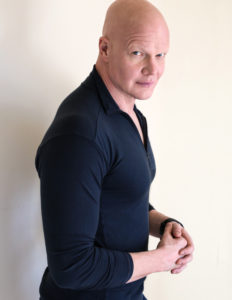
TrunkSpace: You had mentioned reading Alan Moore’s arc. In going back and looking at the books, was there any iconic imagery that you drew from, and how you physically presented Swamp Thing on camera?
Mears: Oh, for sure. They call it aspect. It’s kind of like Frankenstein. I mean, there’s so many aspects of making a character in general as an actor. There are the physical aspects, and the mental aspects, the emotional. There’s the subtextual, the parables, the metaphors that you try to add in. But on the visual side, absolutely. We’ve taken from the original series with Len Wein and Bernie Wrightson – Bernie Wrightson’s drawings, and we rely heavily, story-wise, through the Alan Moore saga, but there are elements of “52” in some of the design. It’s an amalgamation of all of them. And from time to time, being that I’m a nerd and I learned to read by collecting comic books as a kid, I would do little homages to John Totleben or Stephen Bissette, as well as Bernie Wrightson, so fans could be tied into the characters.
TrunkSpace: And those fans will appreciate that because they will be able to see that you’re just as in love with the character as they are.
Mears: Yeah. It’s weird, because growing up, I grew up on some of those comics. I remember when I was a kid, a little weird story was I remember not being old enough to read yet, and my mom would go get her hair done at a beauty salon or whatever, and every time she went, I got to go across the way to a 7-11 where they sold comic books. Our town didn’t have a comic book store at the time, and I got to choose different comic books to read while she got her hair done. And I remember being a big Batman fan, and I got this one comic, and I went, “Oh, this comic is issue #7 called ‘Swamp Thing’ with Batman in it? Well, Batman’s in it.” And I remember reading it, and being totally into this character, going like, “But he’s a good guy, but he looks so terrifying! Okay!” But I didn’t know what the words were, so later on, having developed to be able to read and understand what it was… and now as an adult, I completely forgot about all that, but when I was doing all my research and going through all the comics, seeing that cover, going, “Wait a second,” and having this rush of nostalgia hit me. “I remember staring at these pictures and trying to understand what was going on in the story, but not being able to read.”
What a crazy full circle to be able to play the character now as an adult.
“Swamp Thing” premieres May 31 on the DC Universe digital subscription service.


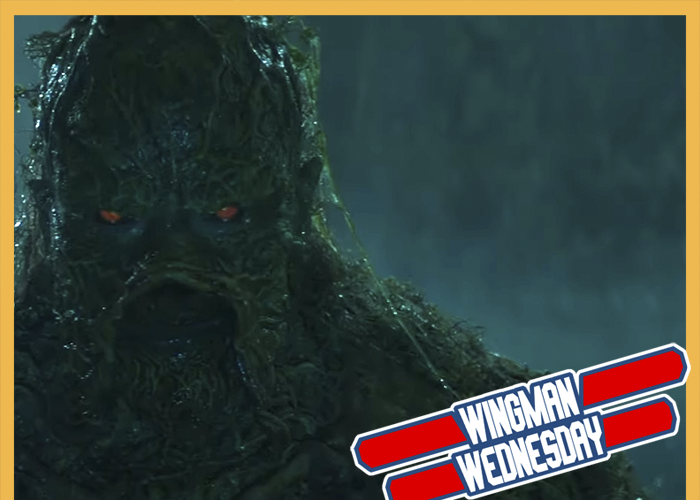
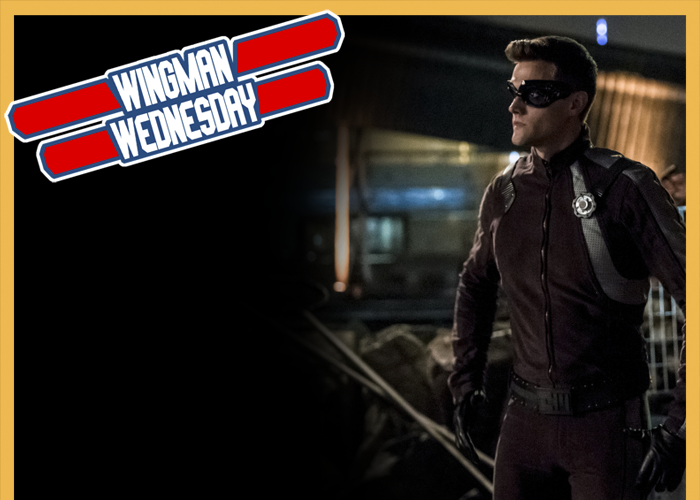
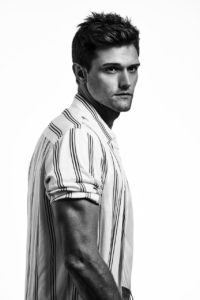
 It’s been one year since Hartley Sawyer joined the cast of “The Flash,” and what a year it’s been.
It’s been one year since Hartley Sawyer joined the cast of “The Flash,” and what a year it’s been.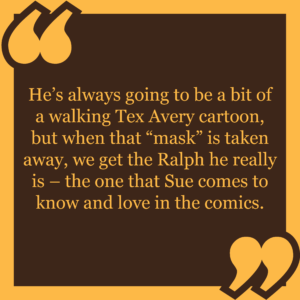 avoid something because it had been on the comic book pages. I was aware of “Identity Crisis” and had read that some time ago. That was helpful to me in the sense that from the first moment I knew the depth of caring and emotion that Ralph as a character is capable of. It’s shrouded in his sarcasm and his sense of humor, but that is always there.
avoid something because it had been on the comic book pages. I was aware of “Identity Crisis” and had read that some time ago. That was helpful to me in the sense that from the first moment I knew the depth of caring and emotion that Ralph as a character is capable of. It’s shrouded in his sarcasm and his sense of humor, but that is always there.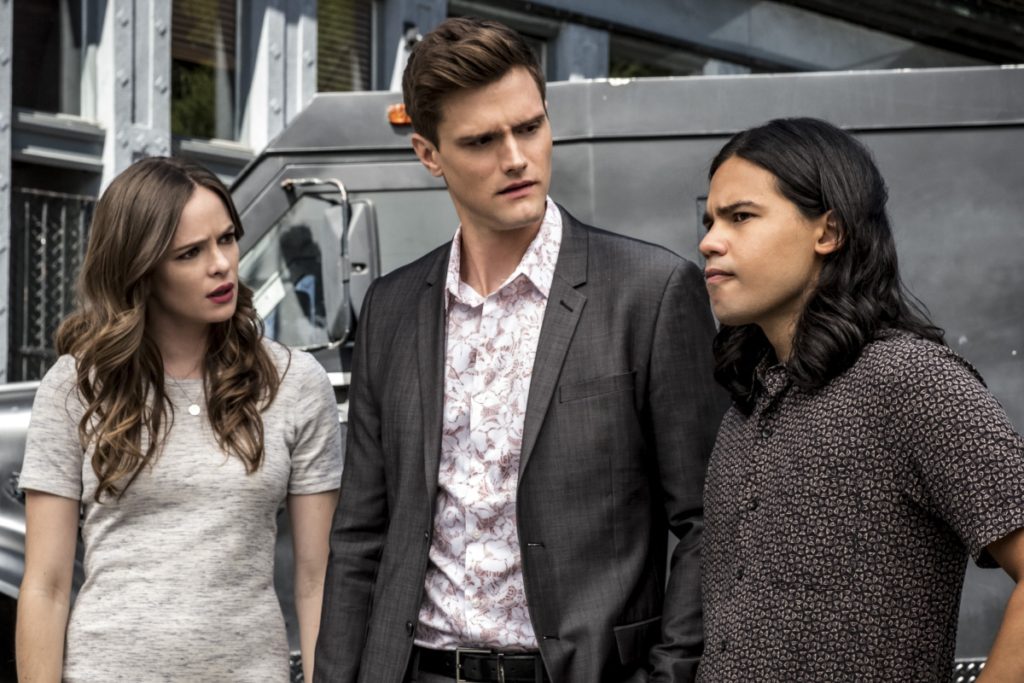
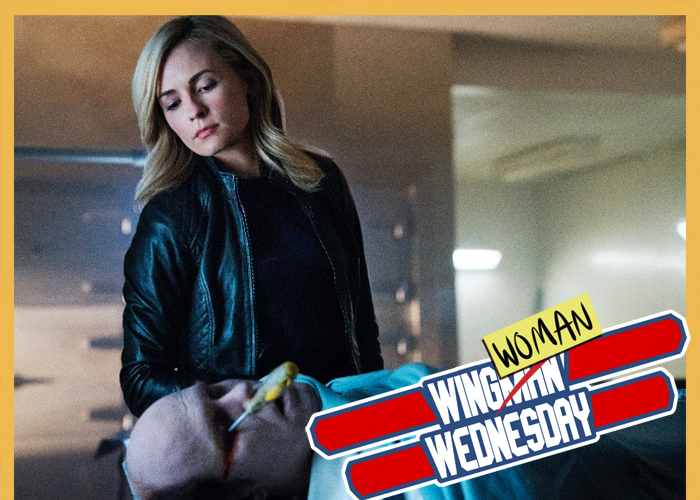
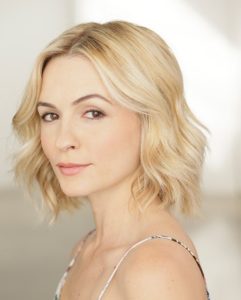 Television can be a cruel place these days. While shows like “The Walking Dead” and “Game of Thrones” have prepared audiences for the “no one is safe!” approach to character consumption, we still can’t help but be disappointed when our favorite performers meet their fictional demise. That was very much the case when Lindsey Gort’s Amy Rohrbach took a surprise exit from “Titans,” leaving many fans of the DC Universe series to speculate if it was all just some twisting ruse.
Television can be a cruel place these days. While shows like “The Walking Dead” and “Game of Thrones” have prepared audiences for the “no one is safe!” approach to character consumption, we still can’t help but be disappointed when our favorite performers meet their fictional demise. That was very much the case when Lindsey Gort’s Amy Rohrbach took a surprise exit from “Titans,” leaving many fans of the DC Universe series to speculate if it was all just some twisting ruse.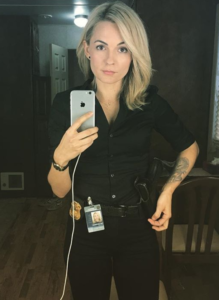

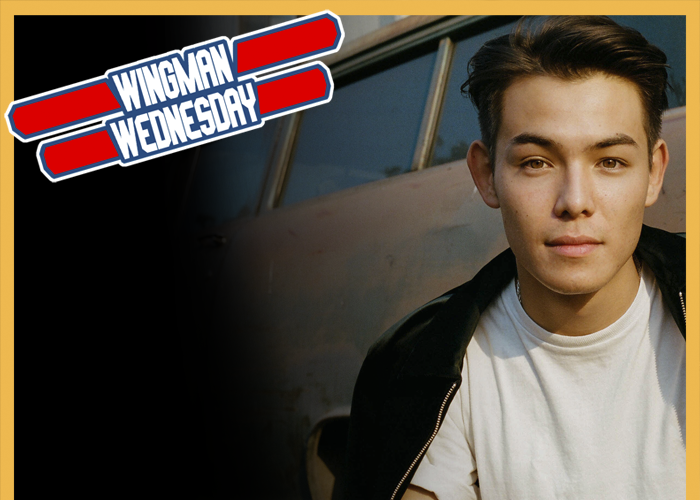
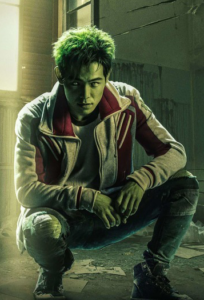
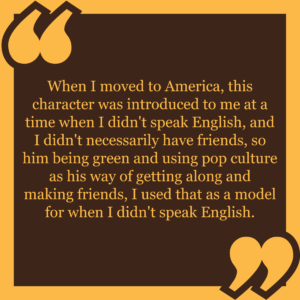 layman’s term for it. When I moved to America, this character was introduced to me at a time when I didn’t speak English, and I didn’t necessarily have friends, so him being green and using pop culture as his way of getting along and making friends, I used that as a model for when I didn’t speak English. I’d use pop culture, whether it was TV shows or music or toys, to try and make friends with kids at school. When I say I relate to this character, I relate to the character because this character actually helped shape a part of my childhood. I identify with him in many ways. There are other aspects that I had to kind of create as a performer in terms of him being a teenager and him being older, but the youthful aspect of the character – kind of the lighthearted curiosity of Gar – is unchanged. That’s something that I always related with and was almost introduced to because of him, so that remains.
layman’s term for it. When I moved to America, this character was introduced to me at a time when I didn’t speak English, and I didn’t necessarily have friends, so him being green and using pop culture as his way of getting along and making friends, I used that as a model for when I didn’t speak English. I’d use pop culture, whether it was TV shows or music or toys, to try and make friends with kids at school. When I say I relate to this character, I relate to the character because this character actually helped shape a part of my childhood. I identify with him in many ways. There are other aspects that I had to kind of create as a performer in terms of him being a teenager and him being older, but the youthful aspect of the character – kind of the lighthearted curiosity of Gar – is unchanged. That’s something that I always related with and was almost introduced to because of him, so that remains.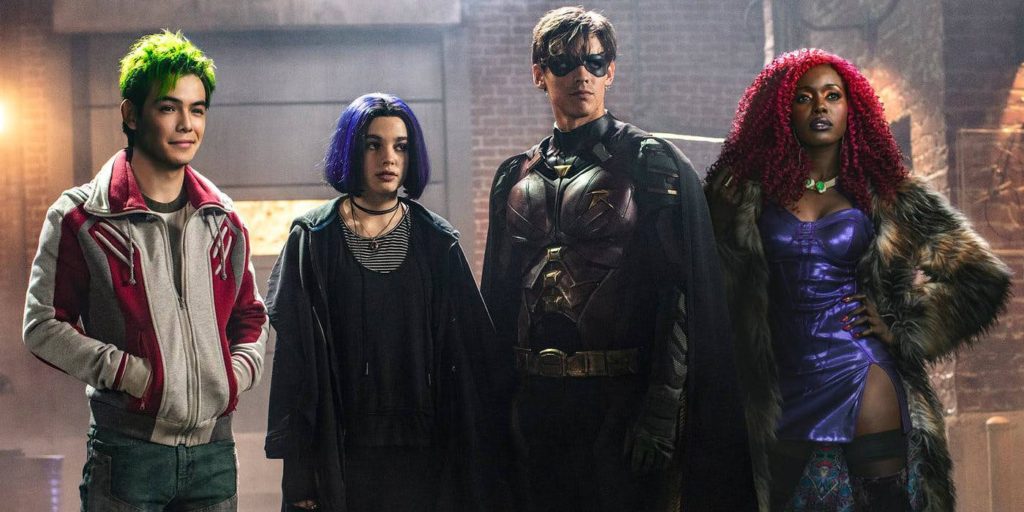
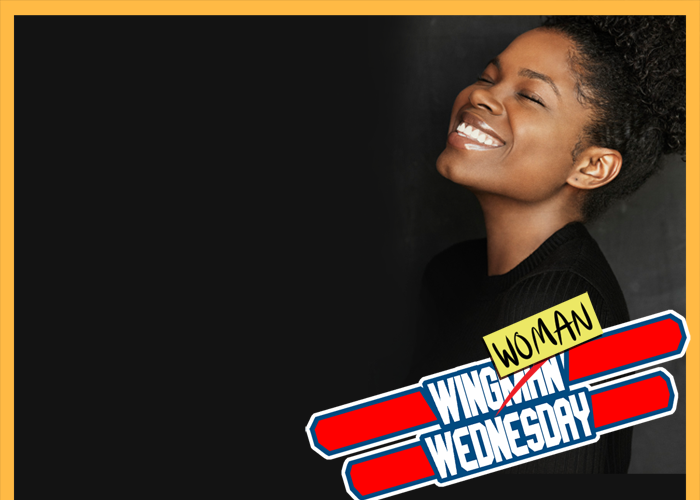
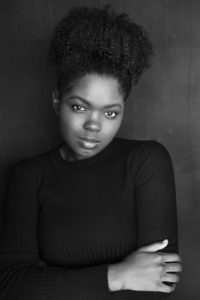
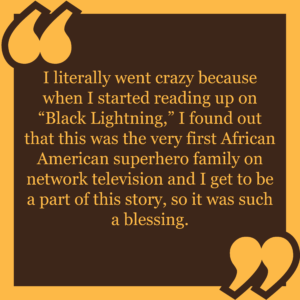
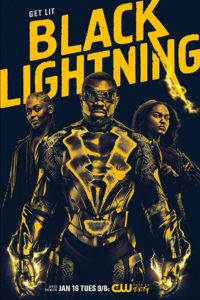 TrunkSpace: It terms of tone, it’s a pretty heavy story.
TrunkSpace: It terms of tone, it’s a pretty heavy story.